Plants with square stems mainly belong to the Lamiaceae family. This family of plants is well-known for being aromatic and officinal, most of them having strong scents and tiny, brightly colored flowers.
Mints, Sages, Oregano, and Rosemary are all Lamiaceae, to name a few of the most familiar plants.
If you find square-stemmed plants, it’s most likely from the Mint plant family, even if there are some exceptions.
Verbenas, Bee Balm, and Sweet Peas are the only three plants we will see in this article that have square stems and aren’t Lamiaceae, but there are others, such as some Saxifrages, Plantains, Willowherbs, and Figworts.
- Related article: Types of Houseplants
In this article, we will talk about the twelve most interesting lists of plants with square stems that can be grown in the garden or as indoor plants!
1. Oregano (Origanum Spp.)
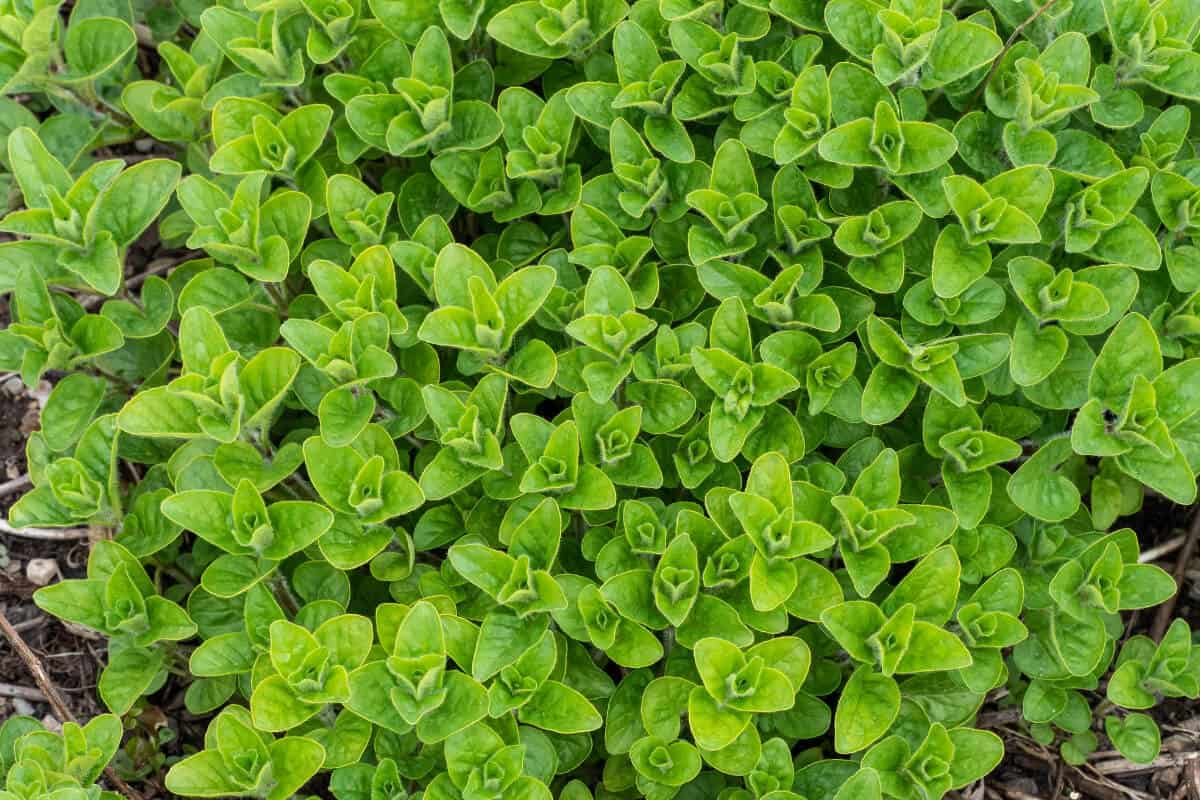
Like most of the plants in the Lamiaceae family, Oregano’s defining characteristic is its square stem. It is a perennial woody plant.
Originally from the Mediterranean region, Oregano is now naturalized in most temperate zones.
It’s an herb with a robust flavor that is a must in many Italian and Greek dishes. Plus it’s excellent as a seasonal ground cover or grown in pots, where it will look beautiful spilling out over the edges.
There are many species of Oregano available and most of them need plenty of sun to thrive.
2. Basil (Ocimum basilicum)
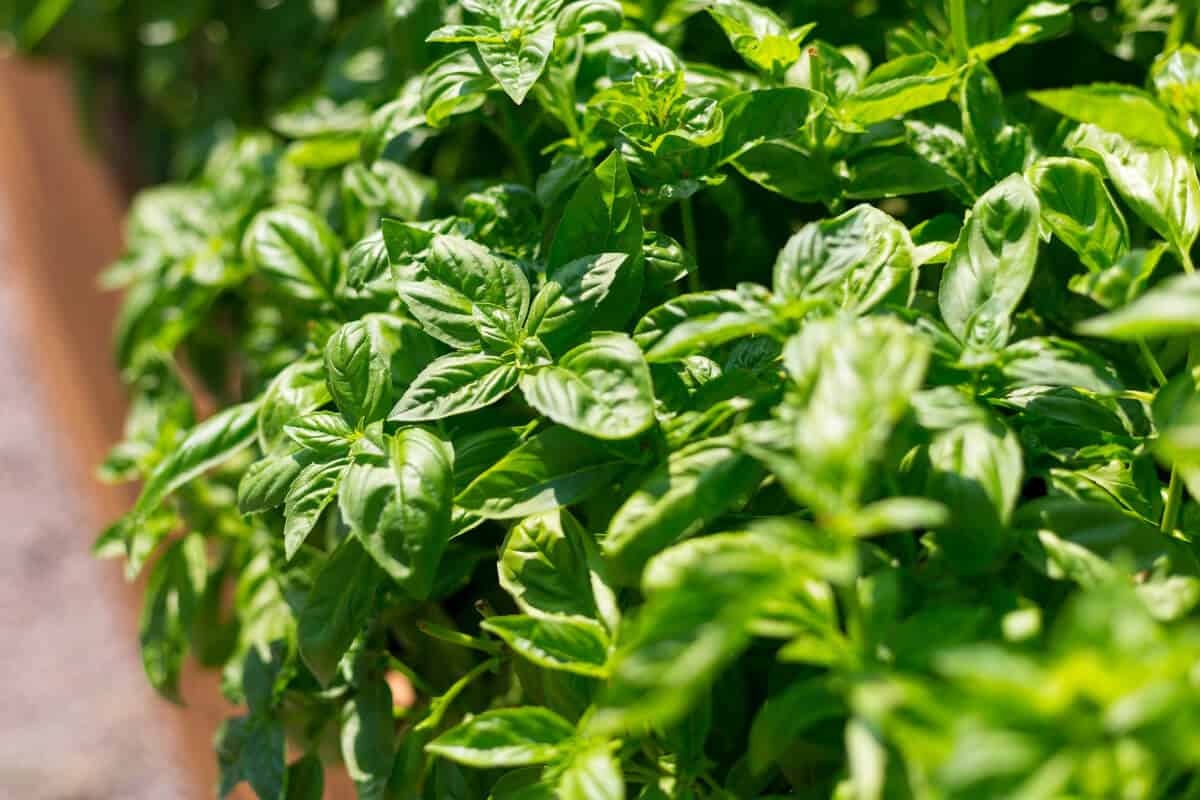
Native to the tropical regions of Africa and Asia, Basil is an herb of the Lamiaceae family.
Being widely used in Italian and other cuisines, its most well-known variety is Sweet Basil, also known as Genovese Basil.
There are also Ornamental Basil cultivars with beautiful purple leaves that look stunning in the garden or grown in containers.
In warm climates, Basil is a short-lived perennial, while in most other temperate areas, it’s treated as an annual.
Basil is a great companion plant in the garden, especially suited to be paired with tomatoes and eggplants.
3. Rosemary (Salvia rosmarinus)
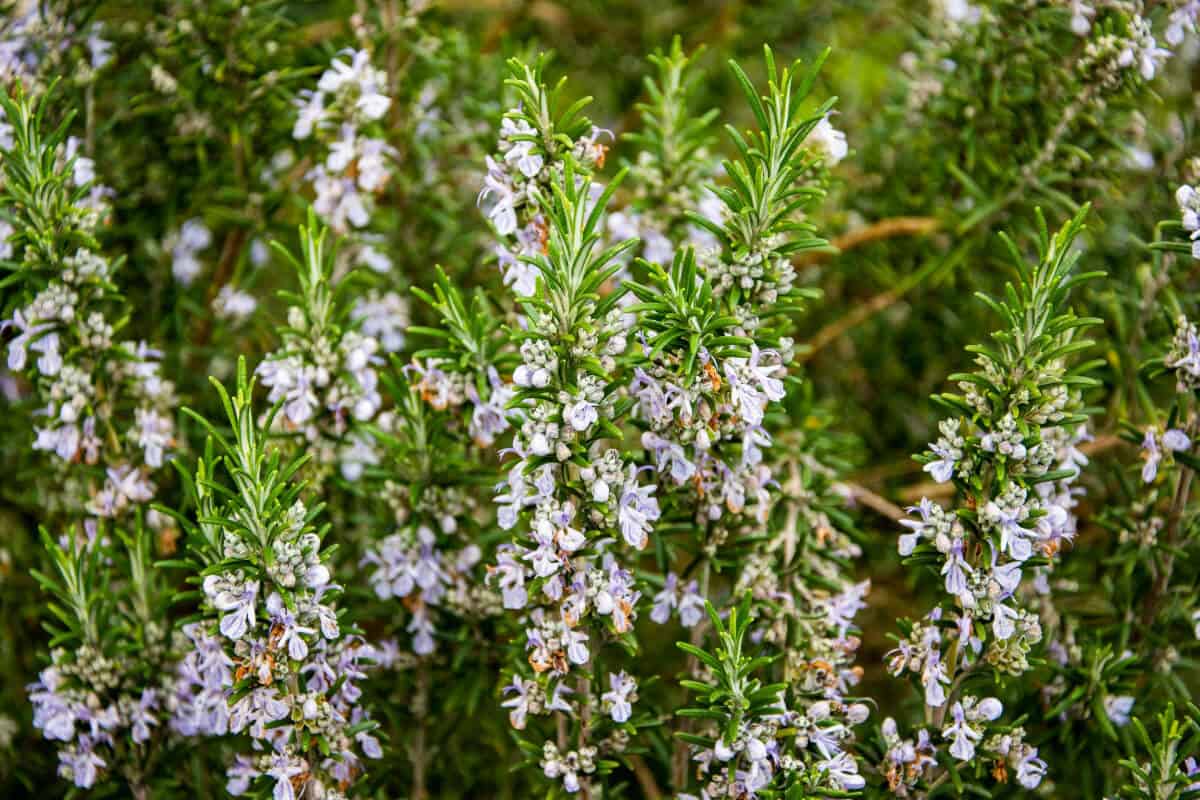
Formerly known as Rosmarinus officinalis, Rosemary is now part of the Salvia genus, together with Sages.
This evergreen shrub has needle-like, aromatic leaves that are particularly appreciated as a flavoring for roast meats and potatoes.
It’s also used as an ornamental plant, since it can grow to be quite large and is resistant to cold temperatures, despite being native to the Mediterranean.
Rosemary also tolerates droughts and is easy to grow, making it a low-maintenance plant.
4. Verbena (Verbena Spp.)
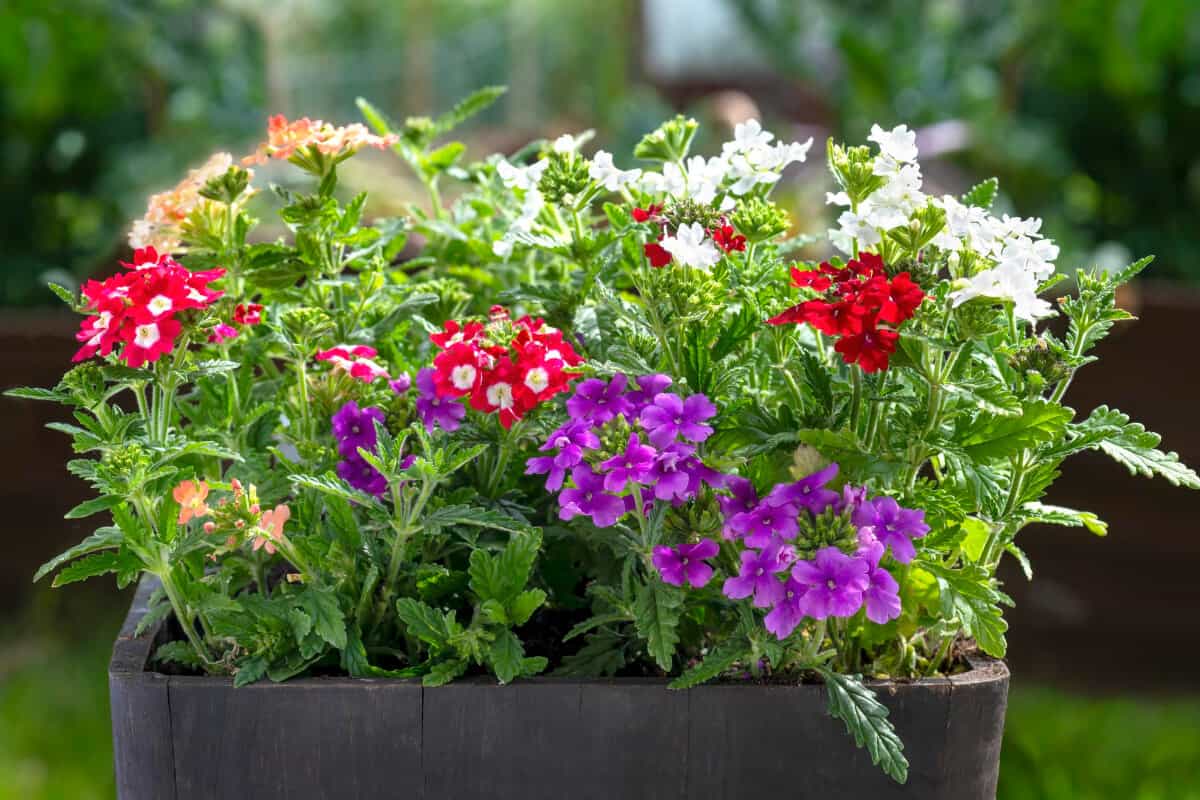
Verbena is an invasive plant and is one of the few plants that are not from the Mint family to have square stems. There are about 150 different species of Verbenas, plus many hybrids cultivated for ornamental use.
Most species are native to Asia and the Americas, but the common Verbena is originally from Europe.
Some Verbenas are annuals while others are perennials, and they produce beautiful, star-shaped, fragrant flowers in different shades of blue, pink, or purple blooms.
Verbenas tolerate droughts, heat, and many different soil conditions and are very attractive to butterflies and bees, especially Verbena officinalis.
5. Bee Balm (Monarda didyma)
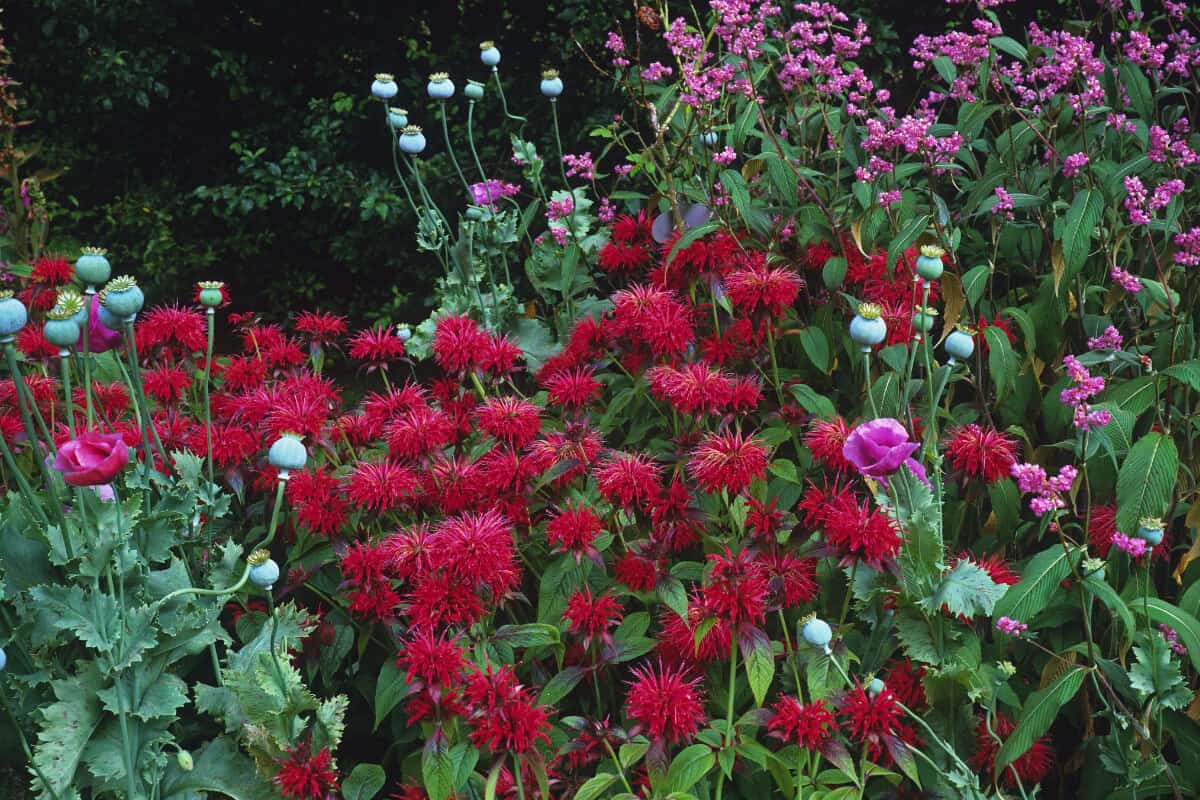
Bee Balm is a perennial herb closely related to Mint. It is native to North America and produces colorful blooms with a spicy fragrance.
These flowers attract pollinator insects, as well as other beneficial ones that feed on garden pests because they are rich in nectar.
Some hybrids of Monarda flowers have truly stunning colors, but its common colors are different shades of red, pink, and purple.
This herb is quite easy to grow and thrives in the sun.
6. Russian Sage (Salvia yangii)
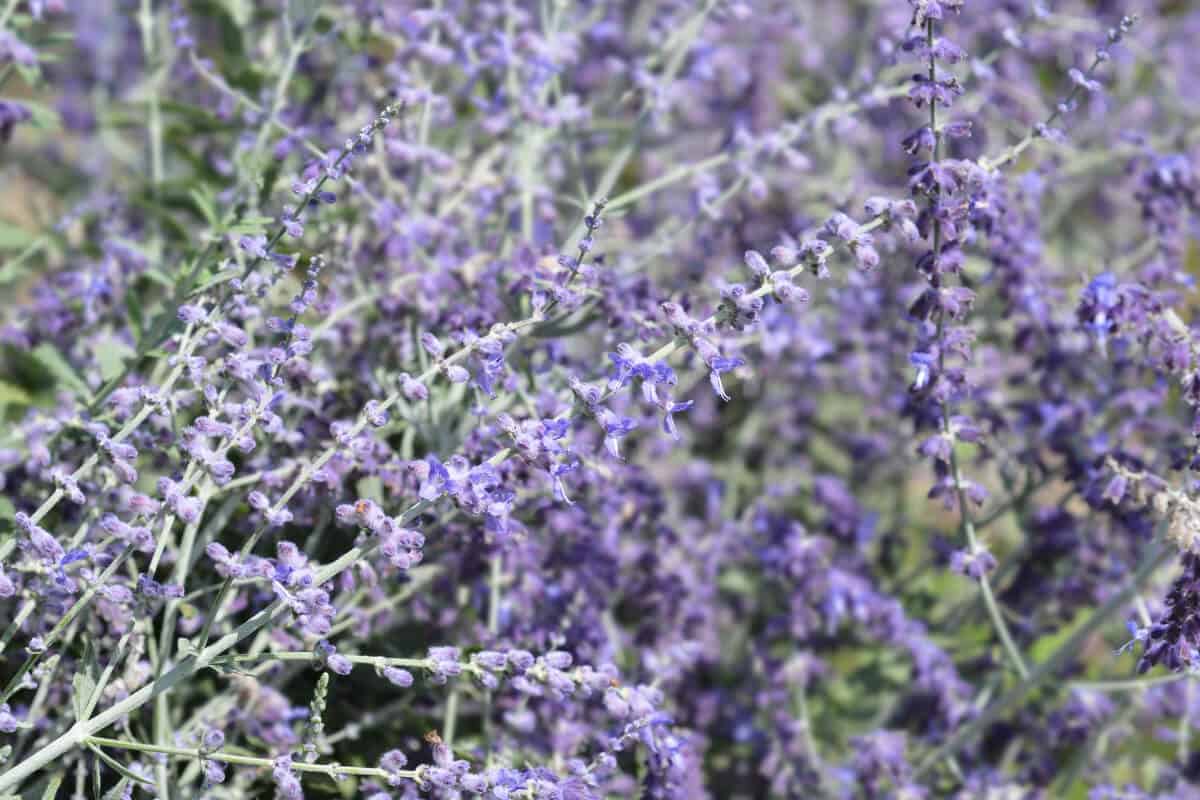
Despite its common name, the Russian Sage plant has only recently become a part of the Sage genus, since it was previously known as Perovskia atriplicifolia.
This perennial plant is well-known for its blue, showy, fragrant flowers that start blooming in mid-summer and last until the fall.
These are food plants and can also be used to make natural dyes.
In its native Asian steppes, people have been employing it for centuries as a traditional remedy for stomach pain and indigestion.
Like other Salvia species, it has square stems and aromatic leaves. Despite its delicate appearance, Russian Sage is quite tough as it tolerates droughts, heat, and poor soils.
7. Dead Nettle (Lamium maculatum)
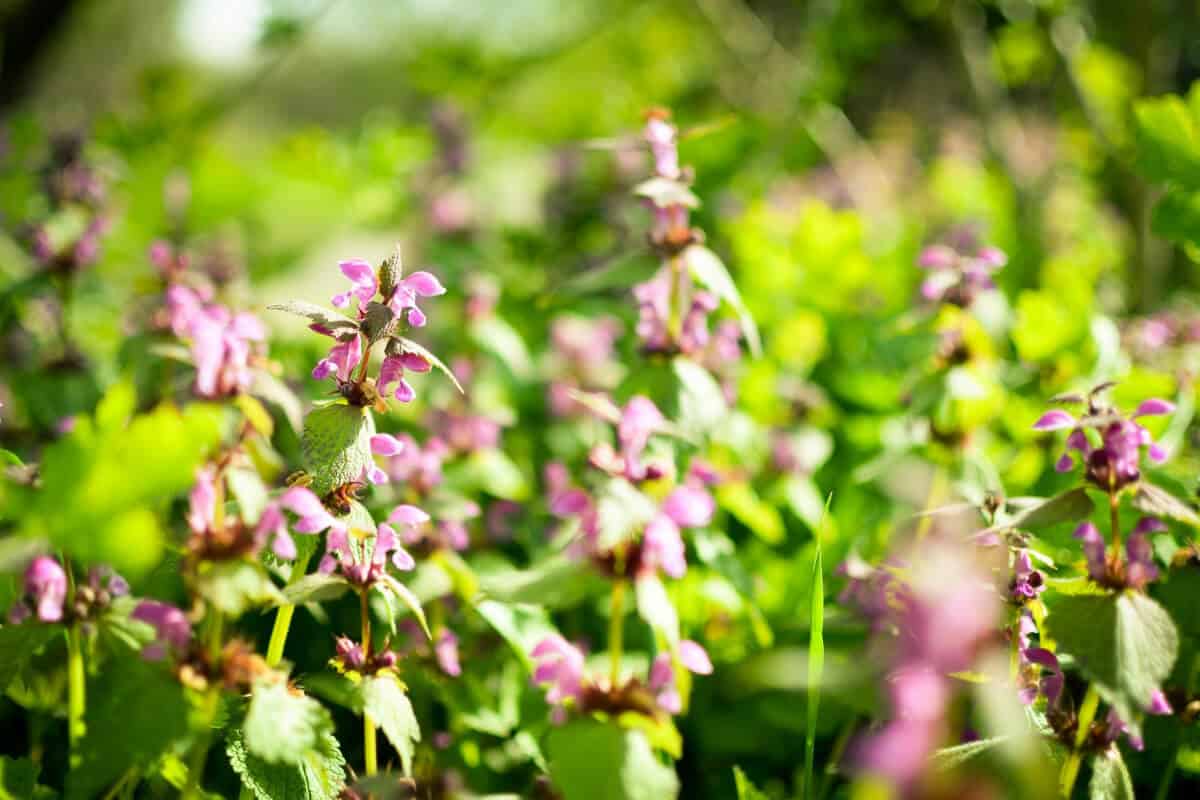
Dead Nettle is a small, perennial, herbaceous plant that typically produces beautiful blooms in white or pink. These hooded flowers start opening in mid-spring and continue through the fall.
Dead Nettle spreads quickly and is often used as ground cover for shaded areas.
Despite looking similar to Stinging Nettle, this plant is part of the Mint family, not the Nettle Family, and is completely innocuous.
Dead Nettle is best cultivated in rich, well-drained soils and dislikes humidity and heat.
8. Bugleweed (Ajuga reptans)
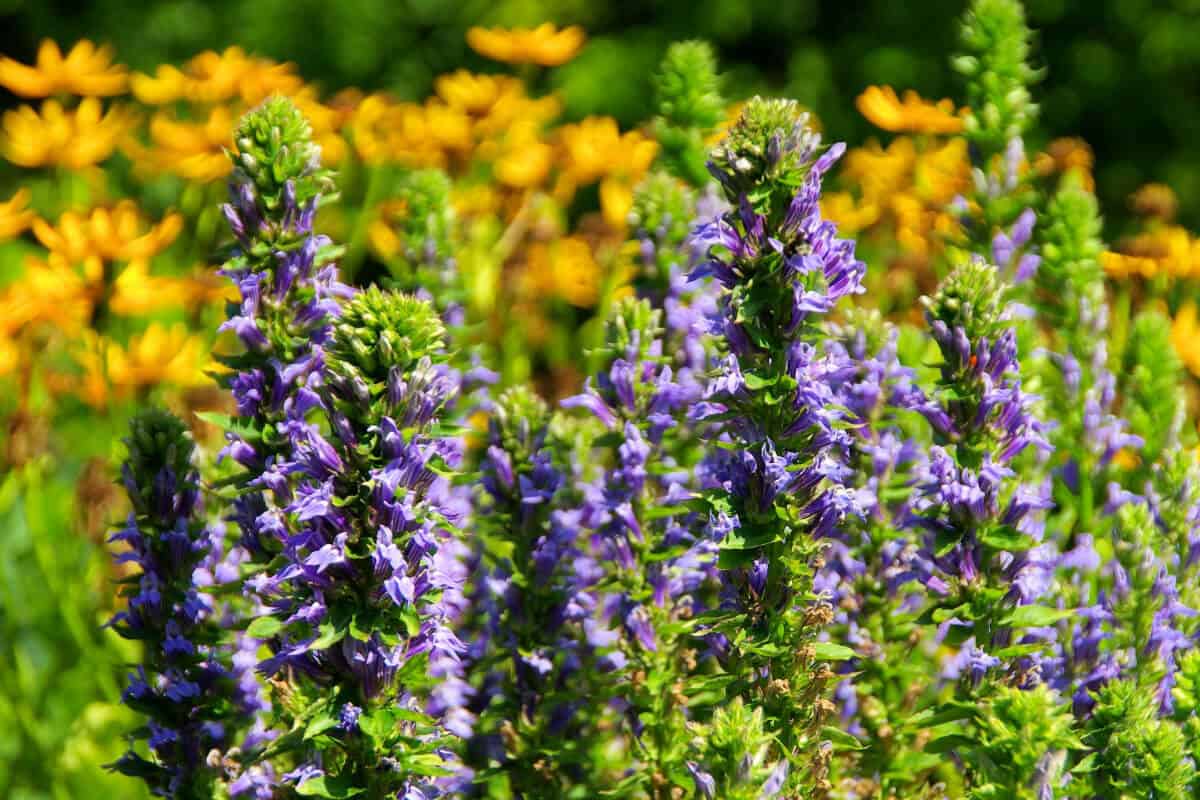
Bugleweed is another herbaceous plant from the Lamiaceae family with typical square stems. It’s an evergreen herb that spreads easily and is particularly suited to cover large, naturalized areas.
It prefers cool, moist conditions and can be grown in any light. Very humid conditions and heavy soils are not suited for Bugleweed cultivation.
Avoid planting it near lawns or perennial beds as it could overpower other plants and be difficult to remove.
Bugleweed grows in a dense mat and produces clusters of small, purple flowers on deep purple foliage.
9. Lamb’s Ears (Stachys bizantina)
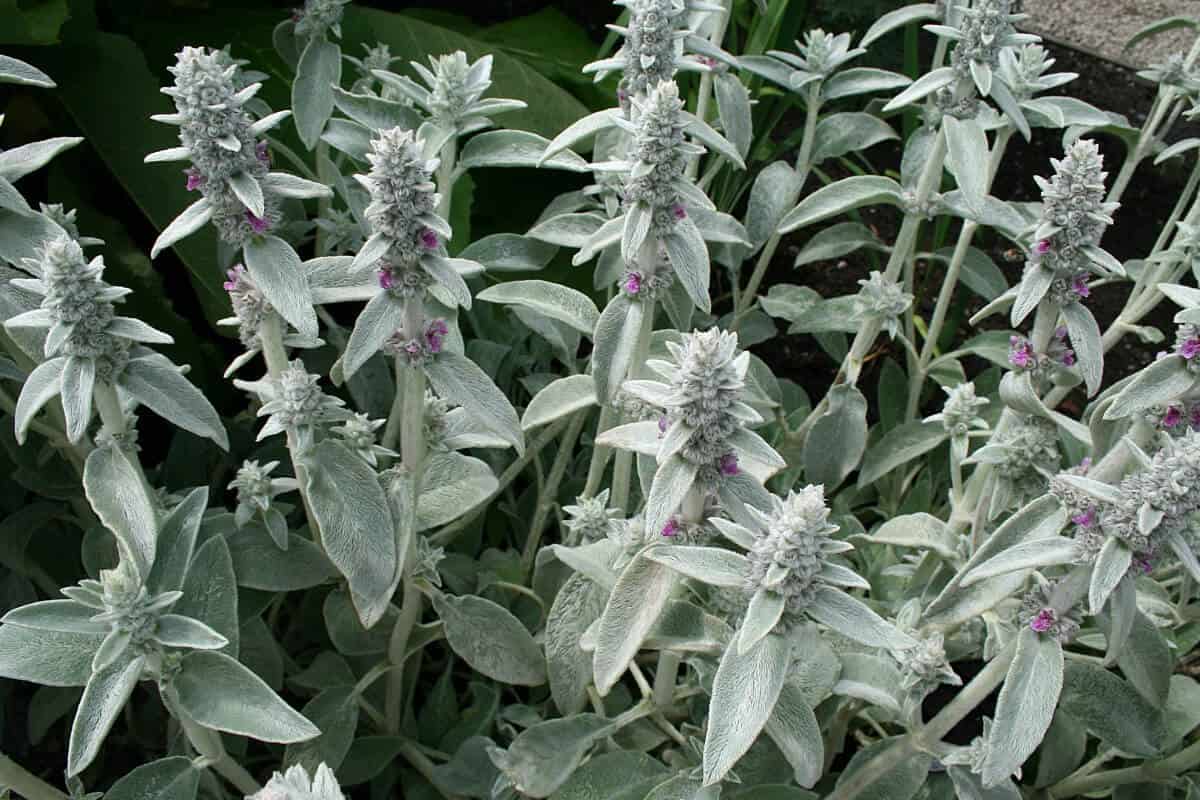
Lamb’s Ears are native to the Middle East but can be grown almost anywhere, thanks to their tolerance for a wide range of conditions.
It’s very easy to care for and is a favorite to grow with kids because of its fuzzy and soft, evergreen leaves. These are bright green at first and later mature into a silvery-green color.
In traditional medicine, they are used to soothe insect stings and heal wounds and they are perfect as a ground cover as they easily form a thick mat low on the ground.
In the summer, Lamb’s Ears grow pink or purple flowers on long spikes, even though some varieties rarely bloom.
10. Coleus (Solenostemon scutellarioides)
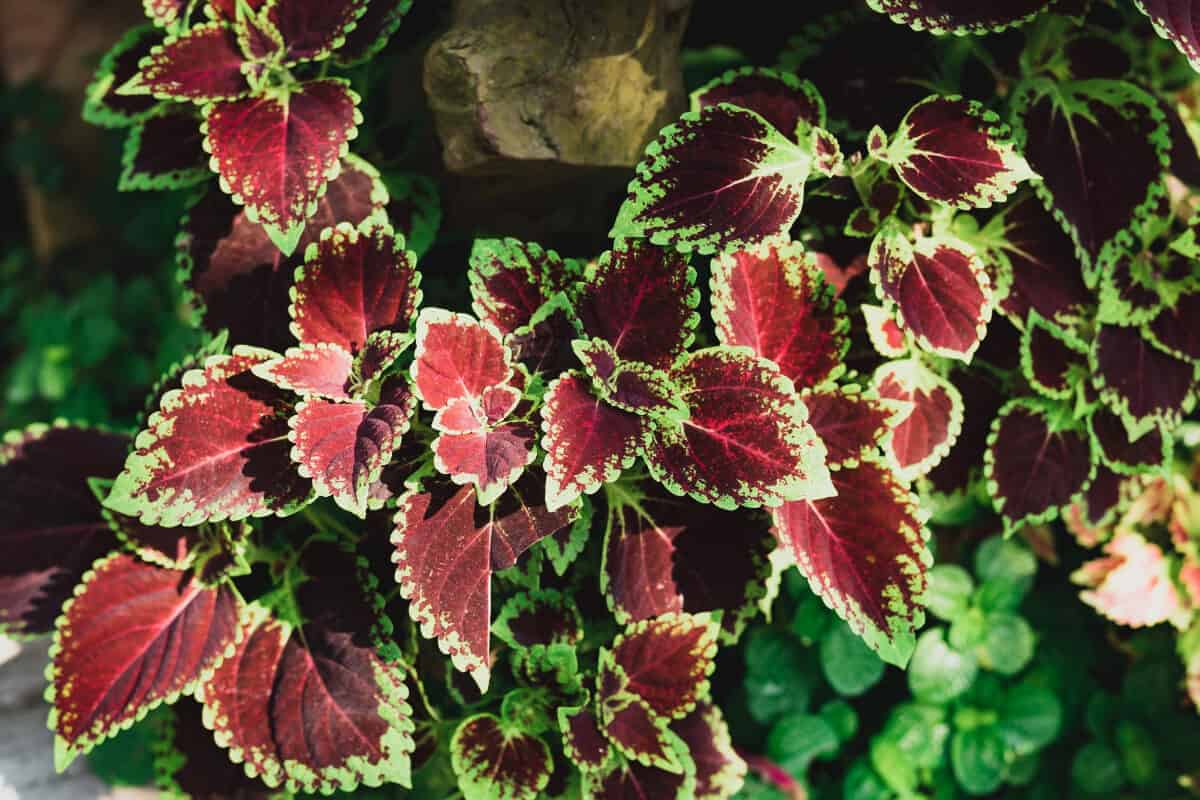
Coleus is another species that looks similar to Stinging Nettle but is actually more closely related to Dead Nettle. Coleus can be easily identified thanks to its square stems, which are a defining characteristic of the Lamiaceae family.
Native to Southeast Asia and Australia, Coleus is an annual herbaceous plant.
Renowned for its colorful leaves, this plant, also called Painted Nettle, comes in many patterns and shades.
The natural variegation of the foliage has been developed into showy and bright colors, ranging from green, white, cream, and yellow to shades of pink, red, maroon, and dark purple through artificial selection.
The foliage is the plant’s main attraction, while its flowers are small and blue in color.
Coleus can be an annual plant or a short-lived perennial.
11. Spur Flower (Plectranthus Spp.)
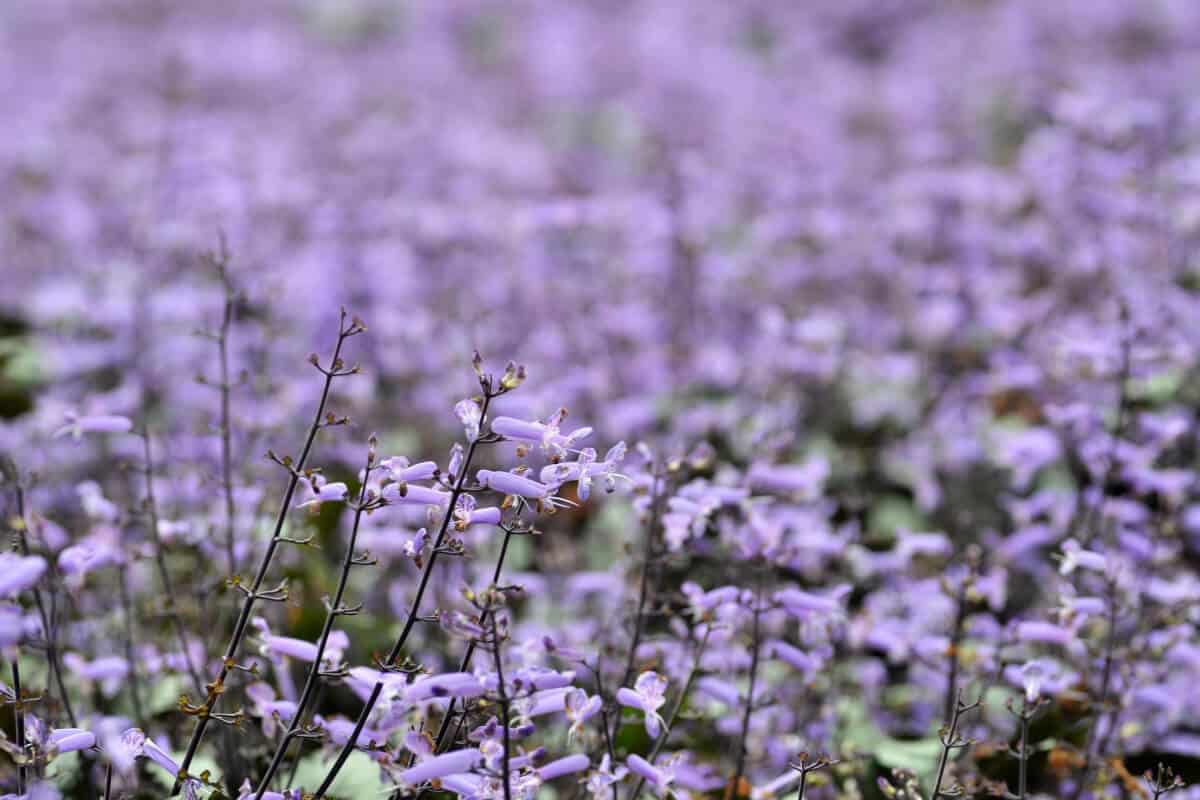
Spur Flowers are plants from the tropical Plectranthus genus of the Lamiaceae family. There are over 85 species of Plectranthus, some annual and others perennials.
They can be used as ground cover or be grown as houseplants, depending on the variety. Spur Flowers are usually low-maintenance and fast-growing.
Plectranthus plants are mostly grown for their colorful and aromatic foliage, but some species also have stunning pink, purple, or white flowers.
Most of them will bloom only if cultivated outdoors, starting in the fall and continuing until spring. In cooler climates, they may also flower in the summer.
12. Sweet Peas (Lathyrus latifolius)
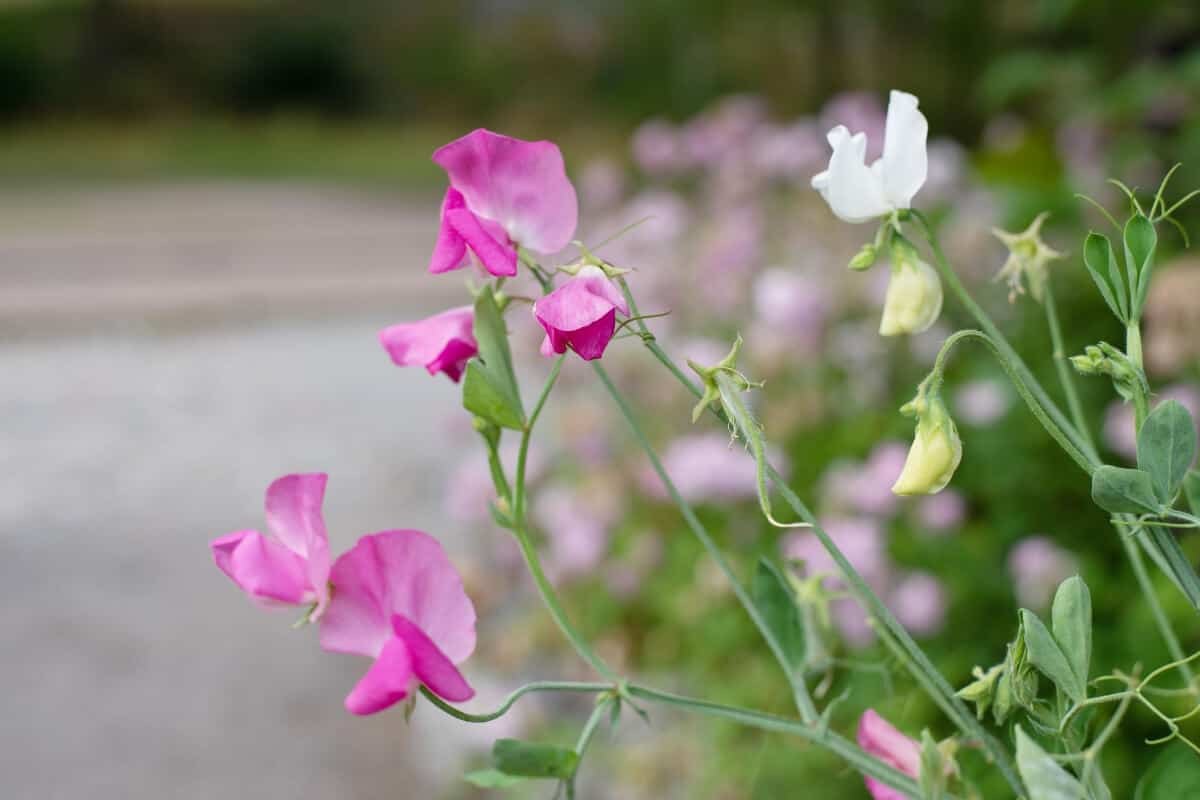
Sweet Peas are among the few non-Lamiaceae to have square stems. This species is part of the Fabaceae family, together with other Peas, Chickpeas, and Beans.
It’s a perennial flowering vine that produces twining tendrils that climb on surfaces, reaching over 6 feet in height. It spreads quite slowly and can live many years, producing bright pink flowers.
Native to Europe, it’s also common in North America and Australia. It’s frost-resistant and prefers fertile soil in full sun or partial shade.
Final Thoughts on Plants With Square Stems
Plants with square stems are a fascinating wide variety of species that are characterized by their sturdy, four-sided structure.
These have extreme plant hardiness and can grow in a variety of environments, ranging from moist to dry habitats, and are found in different families and can be either herbaceous or woody.
The square stem structure enables them to have less flexible tissues that make them more resistant to breaking in wind and other harsh growing conditions.
Furthermore, the square shape is linked to a unique vascular structure that allows for efficient water transport.
Overall, these adaptations make plants with square stems unique and interesting, and they are worth studying for their ecological and economic importance!
Take a look at these articles if you want to know more about plants for your garden:
- Flowers That Look Like Bells
- Plants With Purple Foliage
- Houseplants With Red Flowers
- Velvet Plant Leaves
- Plants With Burrs
Sources:
- http://mints.uga.edu/Meet_the_Mints.pdf
- https://hortnews.extension.iastate.edu/growing-bee-balm-home-garden
- https://dodge.extension.wisc.edu/2020/05/ask-a-master-gardener-lambs-ear-a-texturally-appealing-plant/
- https://plants.ces.ncsu.edu/plants/plectranthus/
- https://extension.missouri.edu/news/planting-wonderful-sweet-peas-1735


Nice article … but you forgot about cat nip- it has a very square stock on it … 🙂